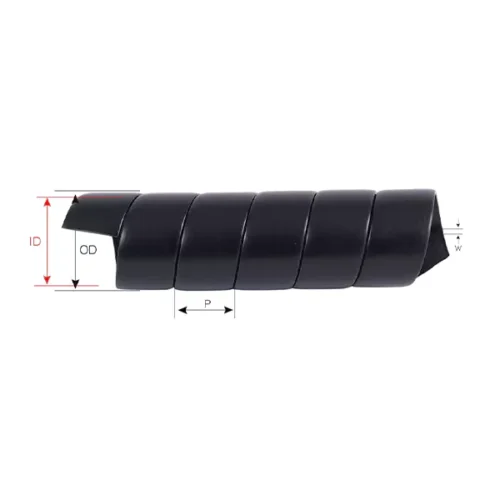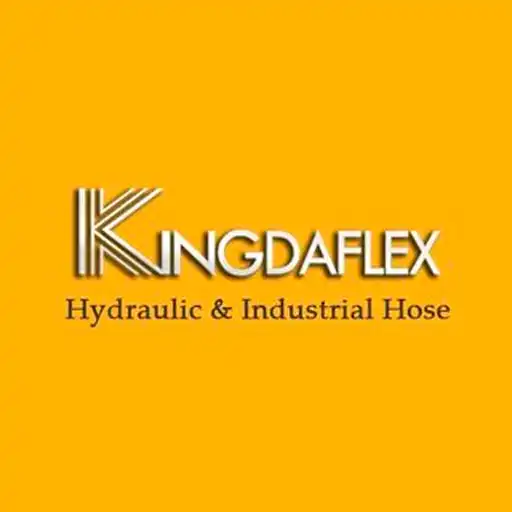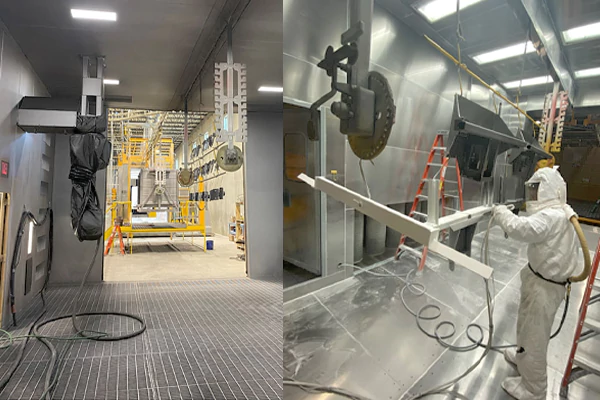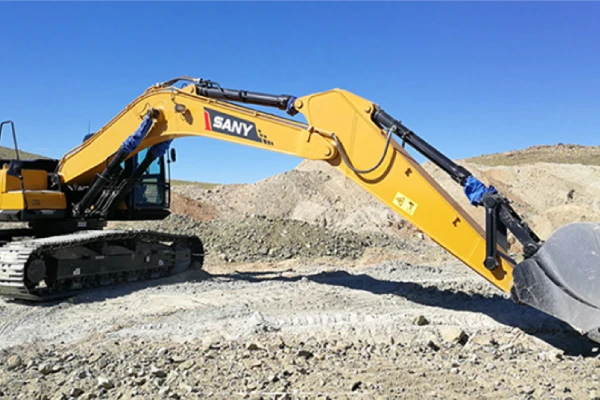Hydraulic hoses are the lifeblood of many powerful machines, but their vulnerability to damage can lead to costly downtime and safety hazards. Protecting these critical components is paramount for operational efficiency and preventing potential accidents.
This blog post delves into essential strategies to safeguard your hydraulic hoses. From proper installation and routing to regular inspection and preventative maintenance, we’ll explore practical steps you can take to extend hose lifespan and ensure a safer working environment.
Why Hydraulic Hose Protection Matters
Protecting hydraulic hoses might seem like a minor concern, but the consequences of neglecting their safety can be significant. Damaged or failed hydraulic hoses can lead to equipment downtime, costly repairs, environmental contamination from fluid leaks, and, most importantly, serious injuries to personnel. Implementing effective hose protection measures is a proactive approach to ensuring operational efficiency, minimizing financial losses, and creating a safer work environment. Let’s explore the key reasons why hydraulic hose protection truly matters.
Preventing Costly Downtime
Damaged hydraulic hoses can bring operations to a sudden halt, resulting in significant downtime. When machinery is out of service due to hose failure, productivity suffers, project timelines can be jeopardized, and labor costs can escalate. Implementing protective measures minimizes the risk of unexpected hose failures, ensuring smoother operations and preventing costly interruptions to your workflow.
Reducing Repair and Replacement Costs
Regularly replacing damaged hydraulic hoses and associated components can accumulate substantial expenses over time. By implementing protective strategies, you can significantly extend the lifespan of your hydraulic hoses. This reduces the frequency of replacements and minimizes the associated labor costs for repairs, leading to considerable long-term savings on maintenance budgets.
Enhancing Operational Safety
Hydraulic systems operate under high pressure, and a sudden hose rupture can release a powerful jet of hydraulic fluid. This high-pressure fluid can cause serious injuries to personnel, including skin punctures and chemical injection. Protecting hydraulic hoses minimizes the risk of such failures, creating a safer working environment for everyone operating or working near hydraulic machinery.
Minimizing Environmental Impact
Leaks from damaged hydraulic hoses can release harmful hydraulic fluids into the environment, contaminating soil and water sources. Cleaning up these spills can be costly and time-consuming, and environmental regulations often impose significant penalties for such incidents. By preventing hose failures through proactive protection, you can minimize the risk of environmental contamination and avoid associated legal and financial repercussions.
13 Strategies to Protect Hydraulic Hose
Protecting hydraulic hoses is a proactive investment in the longevity, safety, and efficiency of your hydraulic systems. Implementing a combination of protective strategies can significantly mitigate the risks associated with hose damage and failure.
Here are 13 key strategies you can employ to safeguard your hydraulic hoses and ensure reliable operation.
Spring Guards and Armor Coils
Spring guards are helically wound metal or plastic strips that encircle the hydraulic hose, providing excellent external abrasion and impact resistance. Armor coils, typically made of metal, offer a more robust level of protection against crushing and severe impacts, often used in demanding environments. Both solutions allow for hose flexibility while shielding it from physical damage.
Hydraulic Hose Sleeves
Hydraulic hose sleeves are flexible, tubular coverings made from various materials like nylon, polyester, or polyethylene. They offer a cost-effective way to protect hoses from abrasion, snags, and minor impacts. Sleeves are easy to install and can bundle multiple hoses together, preventing them from rubbing against each other or surrounding machinery.
Fire Sleeves
Fire sleeves are specifically designed to protect hydraulic hoses from extreme heat and flames. Constructed from braided fiberglass coated with silicone rubber, these sleeves can withstand high temperatures for short periods, providing crucial protection in fire-prone environments and preventing hose failure due to heat exposure.
Abrasion-Resistant Hydraulic Hose Covers
These specialized covers are engineered with highly durable materials like UHMW polyethylene or tough fabrics to offer superior resistance against constant rubbing and abrasion from contact with machinery, the ground, or other hoses. They are ideal for applications where hoses are subjected to significant external wear.
Hydraulic Hose Clamps and Retainers
Properly securing hydraulic hoses with clamps and retainers prevents excessive movement, vibration, and entanglement, all of which can lead to abrasion, twisting, and eventual failure. Using appropriately sized and installed clamps ensures hoses are routed correctly and remain in their designated positions, minimizing stress and wear.
Heat Shields
Heat shields are reflective barriers made from materials like aluminized fabric that deflect radiant heat away from hydraulic hoses. They are essential in applications where hoses are located near hot engine components, exhaust manifolds, or other heat sources, preventing premature degradation and failure due to elevated temperatures.
Bend Restrictors
Bend restrictors are flexible or rigid components installed at hose ends to prevent kinking and over-bending, especially at the critical connection points. By controlling the bend radius, they reduce stress on the hose and fittings, extending their lifespan and preventing flow restrictions or damage to the hose reinforcement.
Protective Hose Wraps (Plastic and Metal)
These hydraulic hose protection wraps consist of spirally applied plastic or metal strips that encircle the hose, providing a layer of protection against abrasion, crushing, and impacts. Plastic wraps offer good flexibility and chemical resistance, while metal wraps provide superior mechanical protection in harsh environments.
Burst Protection Sleeves
Burst protection sleeves are designed to contain hydraulic fluid in the event of a hose rupture. Made from high-strength materials, these sleeves minimize the hazards associated with high-pressure leaks, protecting personnel and the environment from the potentially dangerous release of hydraulic fluid.
UV Protective Covers
Exposure to ultraviolet (UV) radiation from sunlight can degrade the rubber and other materials in hydraulic hoses over time, leading to cracking and eventual failure. UV protective covers or coatings shield the hoses from harmful UV rays, significantly extending their service life, especially in outdoor applications.
Electrical Insulation Sleeves
In applications where hydraulic hoses may come into contact with electrical components, electrical insulation sleeves provide a crucial barrier to prevent electrical hazards. These non-conductive sleeves protect both the equipment and personnel from potential electrical shorts or shocks.
Crush-Resistant Protection
For hoses operating in environments where they are at risk of being crushed by heavy objects or machinery, crush-resistant guards or conduits made from robust materials like steel offer essential protection. These measures prevent the hose from being flattened or damaged, ensuring continued fluid flow and preventing failure.
Chemical-Resistant Hydraulic Hose Covers
In applications where hydraulic hoses are exposed to corrosive chemicals or solvents, chemical-resistant covers made from materials like Teflon or specialized polymers provide a vital barrier. These covers prevent the chemicals from degrading the hose material, ensuring long-term reliability and preventing leaks or failures due to chemical attack.
Choose the Right Hydraulic Hose Protection
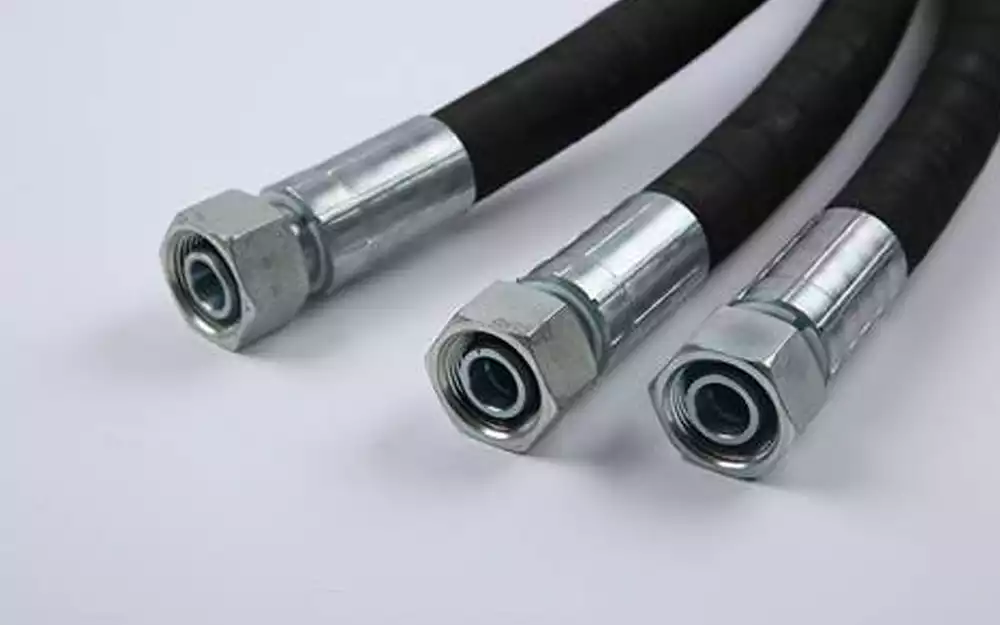
Selecting the most appropriate hydraulic hose protection requires careful consideration of the specific application, environmental factors, and potential hazards. A one-size-fits-all approach is rarely effective. By evaluating the risks and understanding the benefits of different protective measures, you can make informed decisions that maximize hose lifespan, enhance safety, and minimize downtime.
Here’s a guide to choosing the right hydraulic hose protection for your needs.
Identify Potential Hazards
Begin by thoroughly assessing the operating environment and identifying the specific hazards your hydraulic hoses are likely to encounter. Consider factors such as potential for abrasion from contact with machinery or the ground, risk of impact from falling objects, exposure to extreme temperatures (high or low), presence of corrosive chemicals, exposure to UV radiation, and the likelihood of hose kinking or over-bending.
Evaluate Hydraulic Hose Construction and Materials
Understand the construction and materials of your hydraulic hoses. Different hydraulic hose materials offer varying levels of resistance to abrasion, chemicals, and temperature extremes. Knowing the limitations of your hoses will help you determine the level and type of protection required. For instance, a hose with a less abrasion-resistant cover might benefit more from an external sleeve.
Consider the Application and Equipment
The specific hydraulic hose application and the type of equipment the hydraulic hoses are used on will significantly influence the choice of protection.
Hydraulic hoses on mobile equipment operating in rough terrain may require robust abrasion and impact protection, while hoses in static indoor applications might only need basic abrasion resistance or bundling. Consider the movement and routing of the hoses as well.
Match Protection to Specific Risks
Once you’ve identified the potential hazards, select protective measures that directly address those hydraulic hose risks.
For example, if abrasion is a primary concern, abrasion-resistant sleeves or spiral wraps would be suitable. For high-heat environments, fire sleeves or heat shields are necessary. In areas with potential for crushing, consider crush-resistant guards.
Evaluate Flexibility and Accessibility
Consider the impact of the protective measures on the flexibility and accessibility of the hydraulic hoses. Some robust forms of protection might reduce hose flexibility, which could be a concern in applications with tight bends or frequent movement. Ensure that the chosen protection doesn’t hinder maintenance or inspection of the hoses and fittings.
Assess Installation and Maintenance
Evaluate the ease of installation and the ongoing maintenance requirements of the different protective solutions. Some options, like spiral wraps or sleeves, are relatively easy to install and replace, while others, like metal armor, might require more effort. Consider the long-term maintenance implications and choose solutions that are practical for your operations.
Consider Cost-Effectiveness
While protection is crucial, consider the cost-effectiveness of different options. Balance the initial investment with the potential long-term savings from reduced hose replacements, downtime, and safety incidents. Sometimes, a slightly more expensive but more durable solution can be more cost-effective in the long run.
Prioritize Safety Requirements
In certain industries or applications, specific safety regulations or standards may dictate the type of hydraulic hose protection required. Ensure that your chosen protection meets all relevant safety standards and regulations to maintain compliance and create a safe working environment. Burst protection sleeves, for example, might be mandatory in high-pressure systems where hose failure poses a significant risk.
Consider Bundling and Routing
Proper routing and bundling of hydraulic hoses can itself be a form of protection. Using hose clamps and retainers to secure hoses and prevent them from rubbing against each other or machinery can significantly reduce wear and tear. Consider incorporating these practices along with other protective measures.
Test and Evaluate
After implementing a hose protection solution, monitor its effectiveness in the actual operating environment. Regularly inspect the protection for any signs of wear or damage and make adjustments as needed. Feedback from operators and maintenance personnel can be valuable in optimizing your hose protection strategy.
Route Hydraulic Hose Properly
A good way to safer your hydraulic hose is that you can route the hydraulic hose properly, without twisting or kinking it.
Here are some useful tips for the hydraulic hose installation above in the image, so please focus on the right way to locate the hydraulic hose, to make it fluent to eliminate strains. Those tips are really helpful for you to assemble a hydraulic hose properly, without doing any damage to cause the hydraulic hose failure.
In a word, don’t make the hydraulic hose routed in a strange method, to avoid the place existing sharp edges, and hard objects which would hurt the hydraulic hose cover possibly.
To layout a hydraulic hose naturally following its physical structure, don’t bend it over so much, don’t shorten it so much, don’t stress it so much, don’t strain it so much… Treating it carefully, you can try this way to avoid the hydraulic hose damages, such as corrosion, kinks, cuts, scrapes and etc.
Installing a hydraulic hose is really an important method to keep it in a safe condition to the maximum extent, and please don’t hesitate to consult the experienced hydraulic hose technical experts if you meet any questions about hydraulic hose installation. And also please be free to contact us to get some useful installation tips & hacks from us.
Store Hydraulic Hose Properly

Storing hydraulic hoses properly is also important. Here are some tips useful for your hydraulic hose storage.
- Keep it clean and dry: Please store the hydraulic hose in a clean, dry, and ventilation place, and the indoor temperature could be 10℃ to 20℃, to avoid high temperatures.
- Keep away from direct sunlight and UV light, to avoid radiation damage to break the physical structure of synthetic rubber material.
- To protect the ends of the hydraulic hose to avoid contamination problems.
- Don’t stack your hydraulic hose to make it mass, you can use the hydraulic hose reel to organize the hydraulic hose.
Proactive Maintenance Plan
Regular maintenance is also necessary for hydraulic hose protection. Mostly, hydraulic hose failures or damages can be predicted by reading some signals from the hydraulic hose, such as hydraulic hose kinking, hydraulic hose leaking, hydraulic hose working noise, etc.
All hydraulic hoses should be checked regularly, and you guys can make a plan to fix the hydraulic hose, to recover its functions working for the hydraulic system. It is not difficult to make a schedule to check the hydraulic hose pipe conditions for the hose inspection.
Please remove or replace the hydraulic hose up-to-date if you find some visible problems, such as leaking, kinking, twisting, knots, wear out and etc. All of these damages are visible, you can see the hurt from the surface of the hydraulic hose cover. And you need to use the hydraulic hose testing tools to check for some potential problems.
Use the Hydraulic Hose Protector
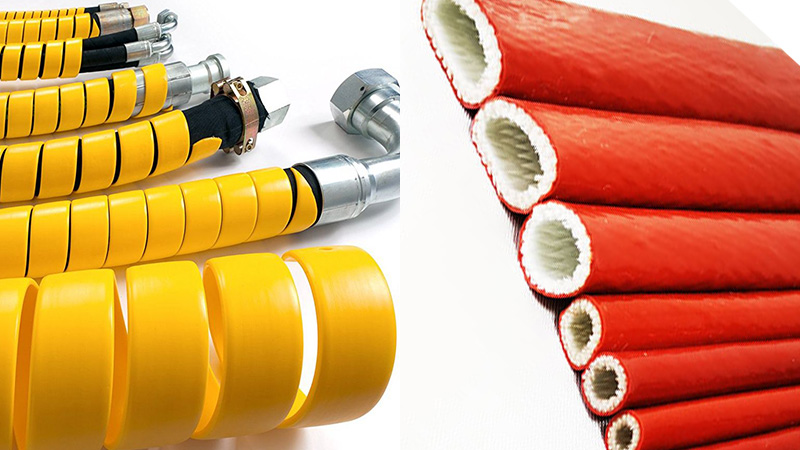
Here you can use hydraulic hose protectors to keep hydraulic hose safe, such as spiral hose guards, and fire sleeve protectors. These two are important protectors to wrap the hydraulic hose and keep it safe at high temperatures.
Also, many other hydraulic hose protectors for you to choose from, including hydraulic hose burst protection sleeves, Nylon sidewinder sleeves, and so on, so you can choose proper hydraulic hose protectors for different conditions.
Conclusion
Implementing these thirteen strategies provides a comprehensive approach to safeguarding your hydraulic hoses, extending their lifespan, and enhancing operational safety. By addressing various potential hazards, from abrasion and extreme temperatures to chemical exposure and crushing, you can significantly reduce the risk of costly downtime and dangerous failures. Remember that the most effective protection often involves a combination of these methods tailored to your specific application and environment.
Investing in proactive hose protection is an investment in the reliability and longevity of your hydraulic systems. The reduced maintenance costs, minimized downtime, and enhanced safety create a significant return on investment over time. By taking these preventative measures, you ensure smoother operations, protect your equipment, and prioritize the well-being of your personnel.
Ready to fortify your hydraulic systems with high-quality hoses and protective solutions? Contact Kingdaflex today for a comprehensive range of wholesale hydraulic hoses designed for durability and performance. Our expert team can help you select the right hoses and protective measures to meet your specific needs and ensure the long-term reliability of your operations.

